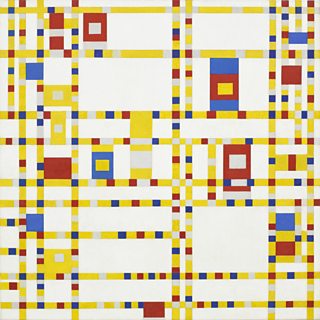What did we find out when a cosmologist looked at Van Gogh’s The Starry Night?
In The Way I See It leading creative thinkers choose an artwork from New York’s Museum of Modern Art, and talk about how it inspires or provokes, thrills or surprises them. It’s presented by art critic Alastair Sooke. In the first episode scientist Janna Levin looks at Van Gogh’s The Starry Night, painted in 1889 while he was at Saint-Paul-de-Mausole asylum in southern France.

1. That’s Venus
Among the celestial beings in the picture one of them is, according to cosmologist and astrophysicist Janna Levin, undoubtedly Venus. How can she be so certain? “It’s low in the sky and it’s big and white. It’s actually not that big a planet but because of its proximity to the earth it looks pretty big in the sky. There’s no star, besides our sun, close enough to look like anything but a twinkle.”
Van Gogh was a fearless pioneer in this massive shift in Western art from looking out to looking in.Art critic Alastair Sooke
And what is it that makes stars twinkle? “The only reason it twinkles is because of the turbulent air. The turbulent air is usually so invisible to us except for that it makes the stars twinkle. We don’t usually see the wind, the wind is invisible to us, we only see it if there’s some tracer, if something is caught in the wind like leaves or the light from a star.”
2. Van Gogh marks the move from objectivity to subjectivity in art
“Unlike artists of earlier generations,” says presenter and art historian Alastair Sooke. “Van Gogh didn’t simply want to replicate the view from the asylum window, he wanted to transform it, he wanted to paint the landscape from within, a landscape animated with a sense of deep churning emotion, a landscape of the mind. Whereas traditionally, since the Renaissance, a lot of Western painting had privileged realism, modern art prized something else entirely – subjectivity, by which I mean artists’ thoughts and feelings, their internal visions. Van Gogh was a fearless pioneer in this massive shift in Western art from looking out to looking in.”
3. ‘Scientists are arguably as subjective as any artist,’ says Alastair Sooke
“I think there’s a general idea for me in both art and in science that we’re navigating the divide between the subjective and the objective,” says Janna, picking up the idea. “We’re trying as scientists who look at the sky to be objective about it but we’re not, we’re definitely imposing a value system – what we think is important, what we think is worth pursuing, what questions we think are worth asking. These are all very human and subjective, people who observe the world whether they’re artists or scientists, they’re always on the cusp of what they see and what’s internal that they’re imposing. This piece is very dramatically and very strongly imposing of the subjective experience because it’s so active.”
4. Van Gogh didn’t think The Starry Night was one of his best
In fact he considered the painting a failure, reveals presenter Alastair Sooke. In a letter to Theo, his art dealer brother, Vincent referred to it as a study and he didn’t even add it to a batch of paintings he hoped his brother would sell for him.
5. The Cyprus trees may have a special significance
In the foreground are two silhouetted Cyprus trees. “Since ancient times the Cyprus had been associated with immortality all around the Mediterranean. When he painted The Starry Night was he already thinking about the afterlife?” asks Alistair. “After all, a year or so after completing the picture, following a deterioration in his mental illness, he eventually committed suicide.”
6. The scientist has to be a bit of an artist to make a black hole something we can see
Janna says “Having taken a picture of a black hole, it took telescopes distributed around the globe orbiting for a week and rotating to collectively analyse the data and create falsely what seemed like the snap of an eye, like one aperture shut but in fact was not, and then we colour code it because our eyes can’t perceive those colours and then we look at it and we say ‘Oh, look there’s a black hole’ but what are we really looking at? I think this is an expression again of where the human intervenes in the experience with the objective reality.”
These words are echoed by Alistair: “Astrophysicists create an image of space, the first accurate picture of a black hole. Van Gogh creates his own highly personal image of space in the form of Starry Night. Both are constructions, both are subjective.”
The Way I See It is on Βι¶ΉΤΌΕΔ Radio 3 and you can listen to all the available episodes on Βι¶ΉΤΌΕΔ Sounds.
Janna Levin | MoMA Βι¶ΉΤΌΕΔ | THE WAY I SEE IT
In the video: Astrophysicist Janna Levin, Jodi Hauptman, senior curator at MOMA, and Paul Kobrak, radio producer at the Βι¶ΉΤΌΕΔ.





